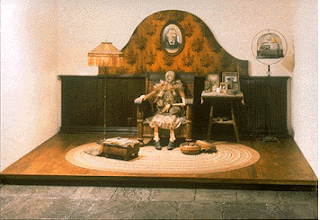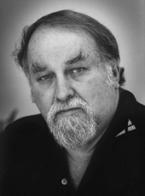Keinholz died in Idaho on June 10, 1994, from a heart attack. He was buried in one of his installations. He was put in the front seat of a 1940 Packard coupe; there was a deck of cards and a dollar in his pocket. A bottle of Chianti was beside him and the ashes of his dog were in the back seat. His wife then drove the car right into the hole where he was to be buried. His wife still organizes shows to display their sculptures. A lot of his works are still causing controversy today.
Bibliography













